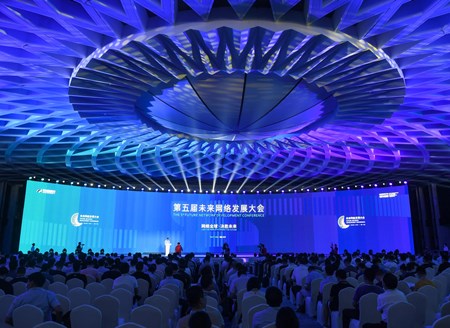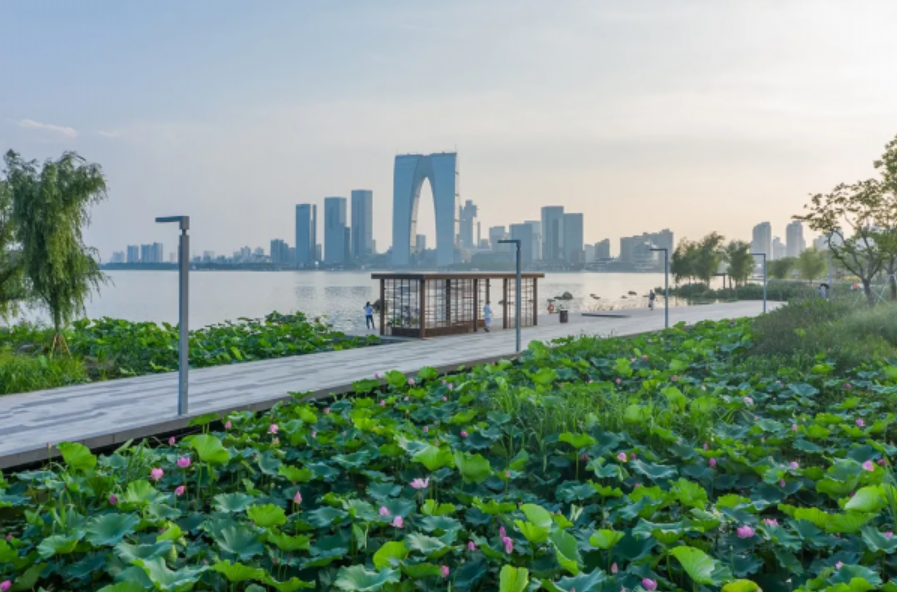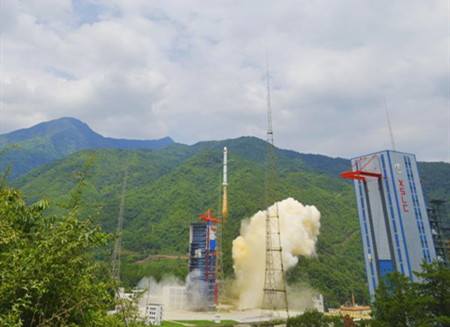In recent years, Jiangsu has focused on new infrastructure construction to create new models of economic development featuring new industries and new formats that have become a powerful engine for promoting economic development.
For new energy vehicle owners or potential new energy vehicle owners, the most worrying thing is the inaccessibility and the scarcity of charging piles.
Nanjing Jiangbei New Area has built an 8-storey three-dimensional garage to become the city’s first building dedicated to charging of new energy vehicles.

The charging comprehensive service building can be equipped with 390 charging parking spaces as charging piles are concentrated in the buildings in the core area of the city so as to avoid the inaccessibility and the scarcity of charging piles.
Two-way charging and discharging technology is adopted in the charging pile so that the car owner charges in off-peak hours and supplies power to the grid in peak hours, reducing the cost of car use and balance the grid load.
"More and more car owners come here to charge their electric cars although there are charging piles in nearby communities."said by a worker of the Charging Comprehensive Service Building.
Since 2020, Jiangsu reported a year-on-yearincrease of 15.5% in the output value of new energy and high-end equipment manufacturing industry, stimulating the growth of new energy vehicles by 21%.
In the future, Nanjing will build more smart charging buildings, and launch urban charging networks in Jiangbei New Area and Jiangning District that link charging columns and power stations to achieve rapid charging within the urban area.These charging areas are not only the carriers of charging facilities, but also new scenarios for new infrastructure.

"Substation replacement is an important link in the future urban fast charging network including online car-hailing charging services. According to the country's requirements for the development of new energy, new energy vehicles will be the mainstream consumption in the future. The construction of charging piles in residential communities will boost the sales of new energy vehicles."said by Tan Kang, Deputy General Manager of Electric Vehicle Service Company of Nanjing Power Supply Company.
All parts of Jiangsu are actively exploring the manufacturing and added value of new energy vehicles. Wuxi has launched a new energy vehicle and charging pile operation monitoring platform to realize the unified supervision, management process and decision-making data of new energy vehicles and charging facilities.
Suzhou has built a core component industry cluster for new energy vehicles such as hydrogen energy, electric and hybrid vehicles. In Changshu High-tech Zone alone, the total operating income of the cluster exceeded 64.8 billion yuan.

"We will focus on the development of green, intelligent, lightweight, and connected vehicles and strive to create an innovative highland for the core component industry of new energy vehicles in the Yangtze River Delta." said by GuZhiqiang, Deputy Director of Changshu High-tech Zone Administration.
The rapid development of "new infrastructure" represented by the construction of charging piles has not only attracted large-scale investment in the information technology industry, but also created a large number of new products and services.

Since 2020, Jiangsu has reported 2.52trillion yuan of added value new economic paradigm, contributing 24.5%to the province’s GDP.
New generation of information technology industry and new material industry reported more than one trillion yuan in output value, accounting for 29.1% and 21.8%.
The province has also witnessed rapid growth in the output of new products including intelligent manufacturing, new materials, new transportation equipment, and high-end electronic information products, stimulating new consumer demand and boosting industrial upgrading.





